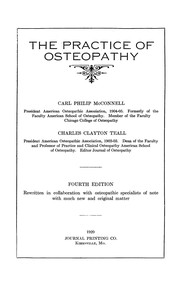Fossil Evidence Shows Plants Survived the End-Permian Mass Extinction in China
Fossils discovered in China indicate that the End-Permian mass extinction, which wiped out 80% of life on Earth, may not have been as devastating for plants as previously thought. Researchers found evidence of gymnosperm forests and ferns in rock layers from this period, suggesting that some ecosystems remained intact. This discovery challenges assumptions that land environments suffered the same fate as marine ecosystems, offering insights into how plants may have adapted and survived extreme climate events

Fossils unearthed in China suggest that the End-Permian mass extinction, which wiped out around 80% of life on Earth nearly 252 million years ago, may not have been as catastrophic for plant life. This period, known as the "Great Dying," saw extreme volcanic activity from the Siberian Traps, leading to drastic increases in carbon dioxide levels, severe global warming, and ocean acidification. While marine ecosystems suffered a near-total collapse, new evidence indicates that some terrestrial plant life endured the crisis. A site in present-day northeastern China has revealed fossilized remains of gymnosperm forests and ferns, pointing to a region where vegetation managed to persist despite the mass extinction event.
Evidence from Rock Layers in Xinjiang
According to a study published in Science Advances, researchers examined rock formations in Xinjiang, China, that date back to the period of the Great Dying. Lead author Wan Yang, a professor of geology and geophysics at Missouri University of Science and Technology, stated in an interview with Live Science that mass plant extinction was not observed in this region. The rock layers contained fossilised spores and pollen, showing a gradual shift in plant species rather than a sudden collapse and regrowth. Yang highlighted that this finding challenges the assumption that land ecosystems suffered the same level of devastation as marine environments during this period.
Climate and Location Played a Role
The research suggests that regions with humid climates and access to water bodies may have served as refuges for plant life. Similar patterns have been observed in South America and Africa, where high-latitude locations appear to have provided more stable conditions for vegetation. Josefina Bodnar, a paleobotanist at the National University of La Plata in Argentina, who was not involved in the study, explained to Live Science that plants possess survival adaptations such as deep-rooted structures and long-lasting seeds, which may have helped them endure extreme conditions.
A Different Impact on Land and Sea
The study also supports the idea that land ecosystems experienced a crisis rather than complete extinction. Robert Gastaldo, an emeritus professor of geology at Colby College, stated that the term "extinction" may not accurately describe what occurred on land. He pointed out that while marine life had no escape from ocean acidification, terrestrial organisms could migrate to more temperate regions or adapt to changing conditions.
Lessons from Earth's Past
The End-Permian extinction has drawn scientific attention due to its parallels with modern climate change. Research has shown that greenhouse gas emissions from volcanic activity during that time reached levels comparable to those expected from human activity by the end of this century. Devin Hoffman, a researcher at University College London, told Live Science that studying past climate crises could offer insight into the potential long-term impacts of rising atmospheric carbon dioxide levels today. Gastaldo further noted that the geological record serves as a historical account of how extreme environmental shifts have affected life on Earth, providing valuable context for current climate concerns.












)



























































